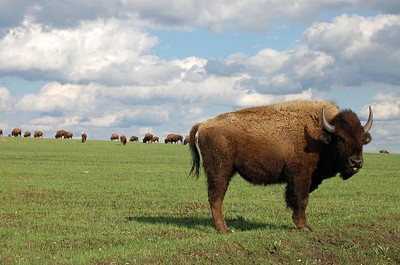Pyric-Herbivory
There is some thought that keystone native herbivores, such as the American bison are solely critical to the maintenance and conservation of the North American Great Plains. This is a simplistic and unrealistic understanding of the grazing process, and the importance of grazing to conserve grassland ecosystems. It has been noted that ecosystem management of grasslands is more dependent on pyric-herbivory in complex landscapes than on the present or absence of specific species of grazing animals. Pyric-herbivory is herbivory promoted through the use of fire. It has been demonstrated from our research on patch burning that the fire-grazing interaction is critical in maintaining heterogeneity of grassland ecosystems and that heterogeneity increases biodiversity and maintains system sustainability. The responses of native plant and animal species are used as indicators of restoration of historical function in grassland ecosystems. A focus on introducing specific species of grazing animal, such as bison may have important conservation implications to that species, but will likely have minimal impact on the conservation of grassland landscapes unless interactive influences of fire and grazing are considered.
Caption: Pyric-herbivory is herbivory promoted through the use of fire. It has been noted that ecosystem management of grasslands is more dependent on pyric-herbivory in complex landscapes than on if specific species of grazing animal are present or absent. Photo Stephen Winter.

